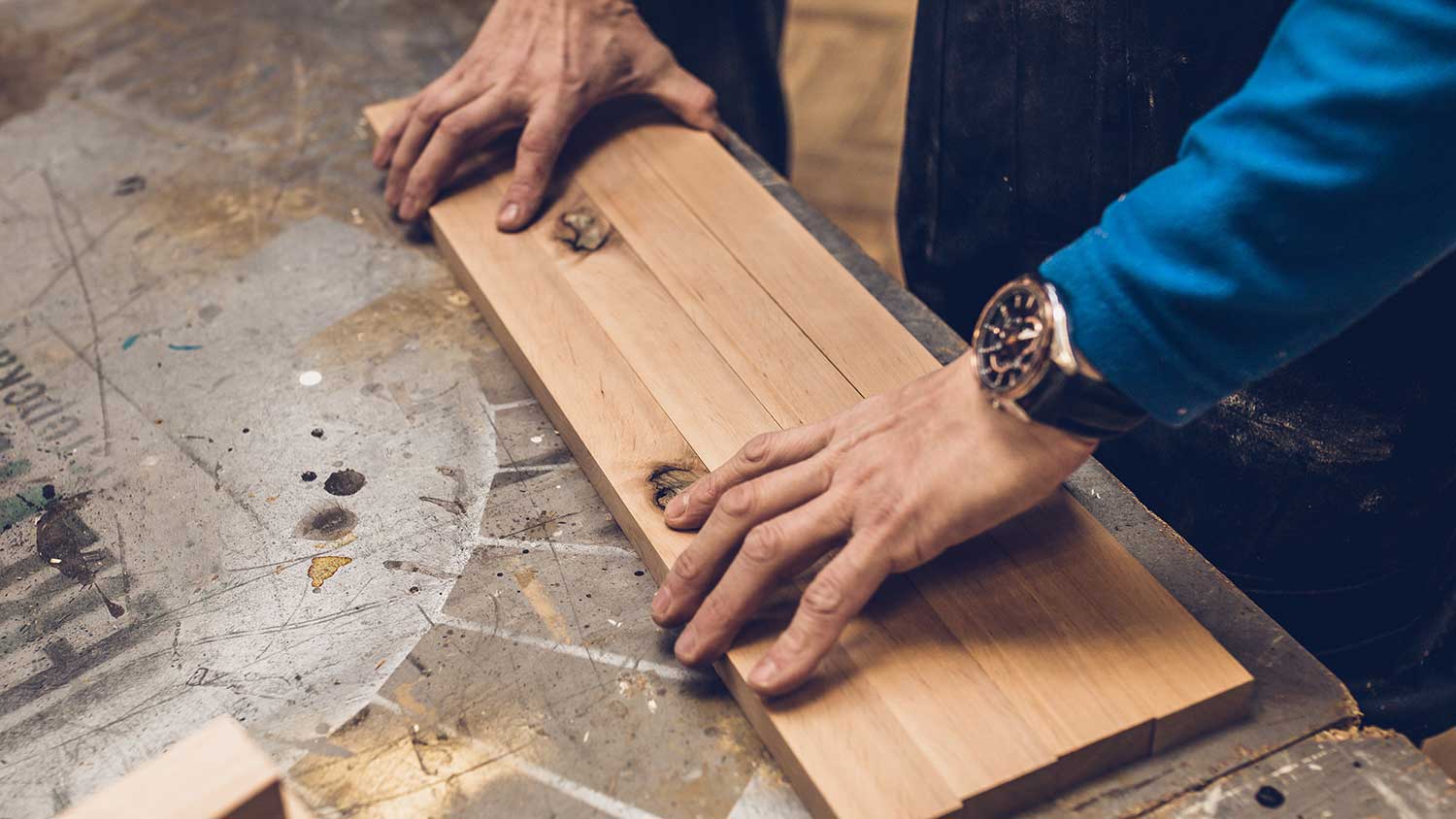How to Build a Simple Garden Bench for Under $40
Stop and smell the roses on your new garden bench


Difficulty: 3/5—Learn a new skill while beautifying your home.
Time to complete: 3–4 hours, including dry time
Tools
Safety goggles
Circular saw or hand saw
Power drill
Supplies:
8 2x2x3-inch pieces of wood
2 1x3x8-inch pieces of wood
2 2x6-inch pieces of wood
1 2x4-inch piece of wood
Clamps
Wood glue
Wood screws
Paint or stain (optional)
Pencil
How nice would it be to have your own little quiet space in the middle of your garden? That’s likely on the mind of many homeowners when they start researching how to build their own garden bench.
The cost to buy a garden bench at home improvement and outdoor stores starts around $100, but can quickly jump up based on the type of wood or design. Even some simpler builds could easily exceed $200 to $300, so tackling this project is totally budget-friendly. Learn how to build your own simple garden bench in just a few hours for under $40.
6 Steps to Build a Garden Bench

1. Decide What Type of Garden Bench Fits Your Tastes
Fortunately, garden benches are pretty popular DIY builds these days. If you’re looking for some inspiration, a little trip down the internet rabbit hole could be warranted. There are thousands of cool designs online that might spark your interest.
If you’re trying to stay on a budget or are new to woodworking for this project—or hey, maybe you’re totally new to gardening and wondering where to start—the project outlined below is for you.
The build outlined in this guide uses lumber, glue, a saw, and a couple of hours of drying time. It’s a fun sturdy little bench without complicated legs or railings (which are more difficult to cut/attach).
Simultaneously, you might consider doing other projects to spruce up your outdoor space, like building your own DIY garden fence or a homemade garden trellis.
2. Line Up Your Boards and Glue Them Together

Take your 2x2x3-inch pieces of wood and line them up side by side. If one end of the wood is flush, meaning one side has a light veneer finish on it and the other does not, make sure you line the pieces up to match accordingly.
For now, it’s okay if the boards aren’t perfectly lined up lengthwise. (This may be the case for lower-cost lumber that’s not all exactly the same size.)
Put wood glue along the edges of each board to seal them together. Repeat this process for all eight boards, then apply clamps to press them together. Wait at least an hour, or however long your glue recommends for drying.
3. Trim Sides, If Necessary
Once the glue is dry, use a pencil to mark off any excess wood that needs to be trimmed. Make these cuts carefully to create one uniform wood plank. This is your bench’s base.
4. Build Your Garden Bench’s Sides

Take your 1x3x8-inch pieces of wood and cut them to measure the distance of both the sides and length of your plank. Attach using both wood glue and wood screws. You should have about 2 inches of space between the top of the sides and the plank.
Let dry again for at least an hour.
5. Build Your Garden Bench’s Legs
You have a little more flexibility with the type of wood you use here. You’ll need two 2x6-inch pieces of wood but you can use older wood you have lying around. Pressure-treated is perfectly fine if you have it. If you don’t intend to paint or stain your bench, a darker wood here could make a nice contrast.
Using your pencil, mark off how tall you want your garden bench to be. Typically, between 18 and 20 inches is good. Make any cuts needed.
At the same time, cut two 2x4 pieces (or use scrap wood) as attachment pieces to help support your legs. Drill four pilot holes (a hole drilled before you attach the screw) into each 2x4, then fasten them to the bench’s legs using screws.
Finally, line them up with the base of your garden bench. Apply wood glue first, then add screws into the pilot holes you drilled to secure. Let dry for an hour at least. In the meantime, consider another garden project, like building DIY garden markers or putting a sundial somewhere in your garden.
6. Apply Paint or Wood Stain

To really make your garden bench your own, apply stain or paint after everything is dry.
Some gardeners worry about synthetic stains being toxic for growing vegetables in a garden. You may want to consider using a natural stain, such as hemp oil or dark tung oil, if this concerns you.
Position your bench in its new home, and you’re all done!
DIY Building a Garden Bench vs. Hiring a Pro
Assembly of a bench can be tackled by a local handyperson or gardening expert who’s got a background in design. But for the most part, simple builds like this one can be tackled by moderately handy homeowners.
If you’re going for a specific style or want a nice bench made out of more pricey woods like mahogany, look for a premade option that fits your tastes.





- Landscapers
- Tree Surgeons
- Gardening Services
- Landscape Architects
- Sod Installation
- Tennis Court Contractors
- Landscape Design
- Retaining Wall Companies
- Grading Companies
- Landscape Rock & Sand Delivery
- Mulch Delivery Services
- Pond Companies
- Artificial Grass Companies
- Shrub Removal & Trimming
- Backyard Design Companies
- Commercial Landscaping
- Koi Pond Services
- Backyard Landscapers
- Trampoline Assembly
- Hedge Trimming
- Pond Services
- Garden Design
- Outdoor Plant Watering
- Putting Greens
- French Drains
- Turf Installation
- Sod Removal Services
- Lawn Repair Services
- Brush Chipping Services
- Hardscape Contractor
- Landscape Rock Removal
- What Are the Right Dimensions for Built-In Bench Seating in Kitchens?
- 47 Landscaping Ideas to Consider for Your Home
- 21 Creative Garden Ideas for the Smallest Spaces
- 14 Creative Home Garden Ideas That Inspire
- Plant Like a Pro: 9 Gardening Influencers Share Their Secrets to Growing Thriving Plants
- How Long Does Wood Glue Take to Dry?
- How to Waterproof Wood With 3 Simple Methods
- How to Build a Wooden Frame for a One-of-a-Kind Mirror
- How to Build a House: Your Complete Guide to the Home-Building Process
- How to Keep Your Pandemic Garden Blooming This Spring










